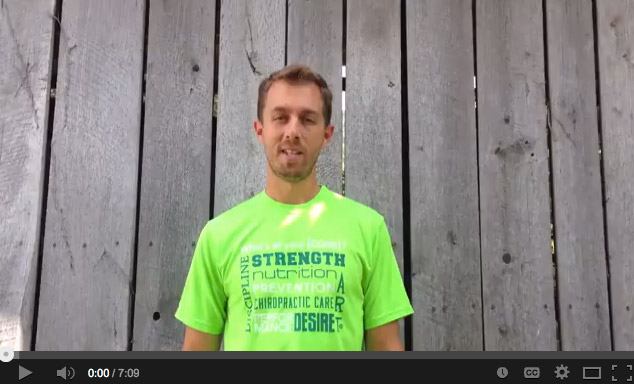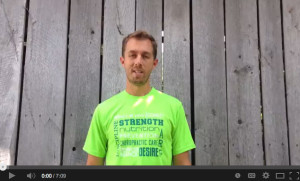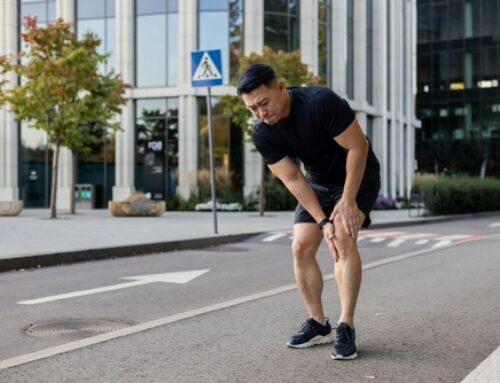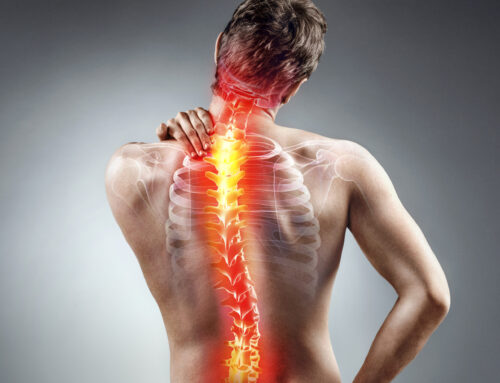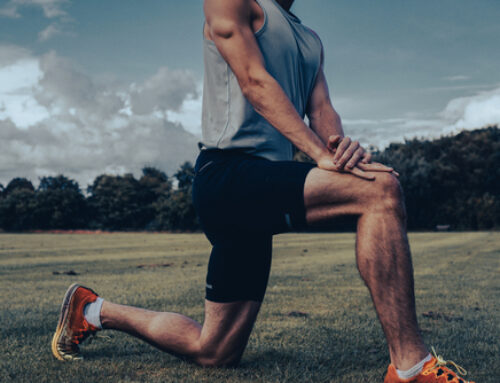What can be done to prevent or fix the Upper Cross Syndrome (UCS) problem (head, neck, and shoulder pain)? When we treat UCS, the shortened muscles must be restored (lengthened) before training the weakened muscles. This is based on Sherrington’s Law of reciprocal inhibition, which states that when one muscle is shortened or tightened, its opposite muscle relaxes. We use the premiere soft-tissue technique known as Active Release Technique to accomplish this lengthening process (ActiveRelease.com).
When you start to exercise the involved muscles we must 1st learn to properly ‘set’ your shoulders so you don’t perpetuate the problem you are attempting to remedy. When we say ‘pinch the blades’, many times athletes will shrug their traps up to their ears. This is NOT what we mean. We want you to set the shoulder, or pack the joint as we sometimes say. This means to pinch them together and down. I like to use the cue that I stole from former Invictus Coach, Mark Riebel, to stick your shoulder blades in your back pockets. The right shoulder blade should go into the left back pocket and the left blade into the right pocket, taking the tension out of the upper traps.
Next, pay attention to what your upper traps are doing in your daily routine. Pay attention to how you are moving and always think about packing your shoulder joint when you sit at your desk, lift weights, carry groceries, move, drive, ride a bike, and even when you are just walking around. I constantly have to remind myself to relax my traps when I am standing talking to patients during my day.
Last, here are a few common and easy exercises you can do on your own to help facilitate healthy shoulder and neck posture.
 Scap pull-ups/Scap push-ups– Get some movement on those shoulder blades! Scap pull-ups and push-ups are done with straight arms and initiate very little range of motion – only inches. For the scap pull-up, hang from the pull-up bar with arms completely extended. Pull your shoulder blades down to activate your sub-scap muscles (and lats in this case) and hold for 1-2 seconds in this position. Repeat at least ten times. Same idea goes for the scap push-ups. Hold the top of your push-up position and then spread your blades and then let them sink together all while holding a perfect plank with straight arms. The idea is to just get the blades moving in this one.
Scap pull-ups/Scap push-ups– Get some movement on those shoulder blades! Scap pull-ups and push-ups are done with straight arms and initiate very little range of motion – only inches. For the scap pull-up, hang from the pull-up bar with arms completely extended. Pull your shoulder blades down to activate your sub-scap muscles (and lats in this case) and hold for 1-2 seconds in this position. Repeat at least ten times. Same idea goes for the scap push-ups. Hold the top of your push-up position and then spread your blades and then let them sink together all while holding a perfect plank with straight arms. The idea is to just get the blades moving in this one.

Brugger Posture– Stand up from your desk, open your hands up and rotate your thumbs backwards. This will relax your upper traps and allow the shoulder blades to slide down and back to your back pockets. Take a deep breath in through the nose and slowly let it out through the mouth. Repeat 2X and go back to work.
 Wall Sit– Sit on a ball or bench 15” from a wall. Spread your legs very wide and place your elbows on the wall. Place your forehead on your elbows and take a deep breath in through your nose. When you breath in extend your upper back towards the wall creating extension in the upper thoracic spine. Repeat 10x.
Wall Sit– Sit on a ball or bench 15” from a wall. Spread your legs very wide and place your elbows on the wall. Place your forehead on your elbows and take a deep breath in through your nose. When you breath in extend your upper back towards the wall creating extension in the upper thoracic spine. Repeat 10x.
![]() Foam Roller– Lay over a foam roller with your hands under your head. Bridge up off of the floor and roll back and forth over your upper thoracic kyphosis. Repeat for 1 minute. Foam rollers are 15% off all this week in our office!
Foam Roller– Lay over a foam roller with your hands under your head. Bridge up off of the floor and roll back and forth over your upper thoracic kyphosis. Repeat for 1 minute. Foam rollers are 15% off all this week in our office!
 Push-ups off of a ball– Place one of your hands on a fitness ball (mini basketball, soccer ball, or bosu ball works well too). From off of your knees or feet, perform these unstable push-ups. They really activate your upper core muscles. Perform 2-3 sets of 7-15 reps.
Push-ups off of a ball– Place one of your hands on a fitness ball (mini basketball, soccer ball, or bosu ball works well too). From off of your knees or feet, perform these unstable push-ups. They really activate your upper core muscles. Perform 2-3 sets of 7-15 reps.
Click the image below to watch a video in which Dr. Rich demonstrates and explains the best exercises for treating UCS.
Be sure to join us at our free class “Fix Your Head, Neck & Shoulder Pain,” August 14 at 6:00pm at our Roanoke, Virginia chiropractic office.
Dr. Daryl Rich, DC, CSCS

